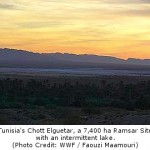Storms in the simulations occurred within a 125-mile (200-kilometer) radius of the Battery, at the southern tip of Manhattan, and generated a maximum wind speed of at least 50 miles per hour. Hurricanes are classified as having a maximum wind speed of at least 74 miles per hour.
Once the researchers simulated storms in the region, they then simulated the resulting storm surges using three different methods, including one used by the National Hurricane Center (NHC). In the days or hours before a hurricane hits land, the NHC uses a storm-surge model to predict the risk and extent of flooding from the impending storm. Such models, however, have not been used to evaluate multiple simulated storms under a scenario of climate change.
Again, the group compared results from multiple methods: one from the NHC that simulates storm surges quickly, though coarsely; another method that generates more accurate storm surges, though more slowly; and a method in between, developed by Lin and her colleagues that estimates relatively accurate surge floods, relatively quickly.
The researchers found that the frequency of massive storm surges would go up in proportion to an increase in more violent storms and a rise in sea level, the researchers reported. They noted that climate models predict that the sea level around New York City could rise by 1.5 to nearly 5 feet by the end of the 21st century.
Flooding was amplified by the storm’s wind direction and proximity to the city. The worst simulated flood, a 15.5-foot storm surge at Manhattan’s Battery, stemmed from a high-intensity storm moving northeast and very close to the city. On the other hand, a weaker but larger northwest-bound storm that was further from the city resulted in floodwater nearly 15 feet deep as its strongest winds pushed water toward the Battery.
Floods of this magnitude outstrip the most devastating storm surges in the city’s recorded history, Lin said. The worst accompanied the 1821 Norfolk and Long Island hurricane, which packed winds of 135 miles per hour and is one of only four hurricanes known to have made landfall in New York City since pre-Columbian times.
“The highest [surge flood] was 3.2 meters [10.4 feet], and this happened in 1821,” Lin said. “That’s the highest water level observed in New York City’s history, which is like a present 500-year event.”
The study was published online February 14 by the journal ‘Nature Climate Change’, and was supported by the U.S. National Oceanic and Atmospheric Administration (NOAA), and the Princeton Environmental Institute through a fellowship from the Program in Science, Technology and Environmental Policy based in Princeton’s Woodrow Wilson School of Public and International Affairs.
Details of the Study:
Source: By Jennifer Chu, MIT.














